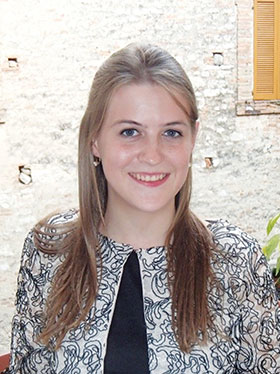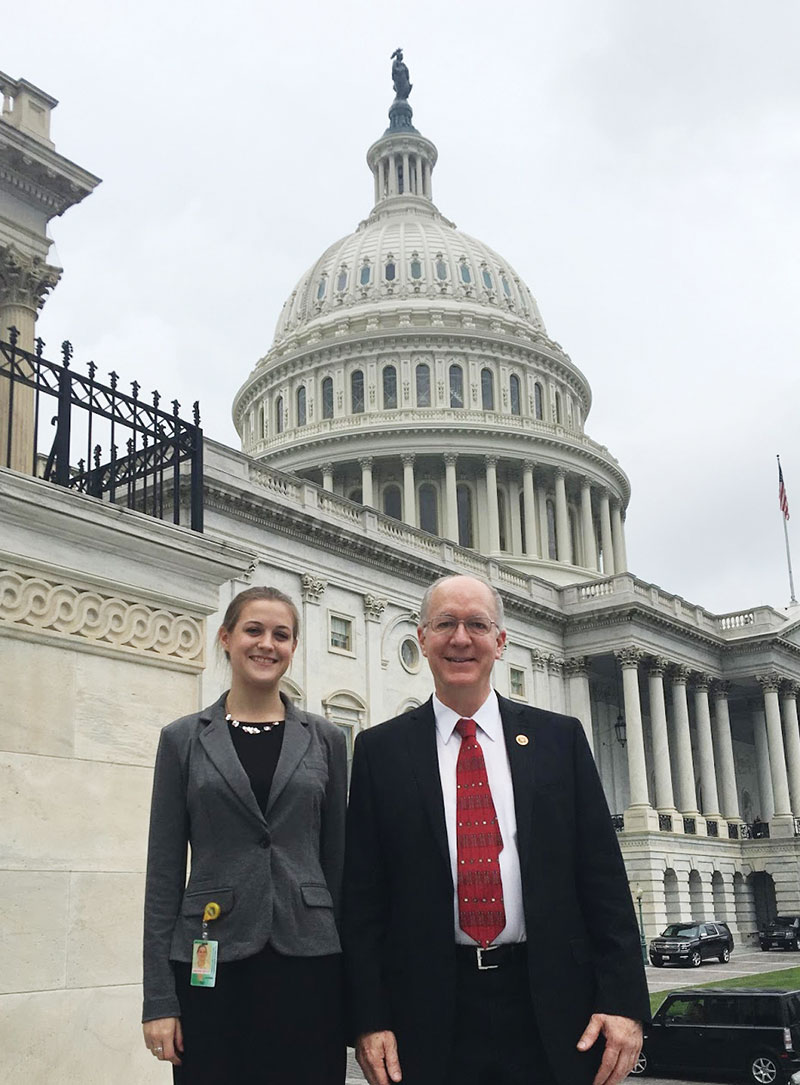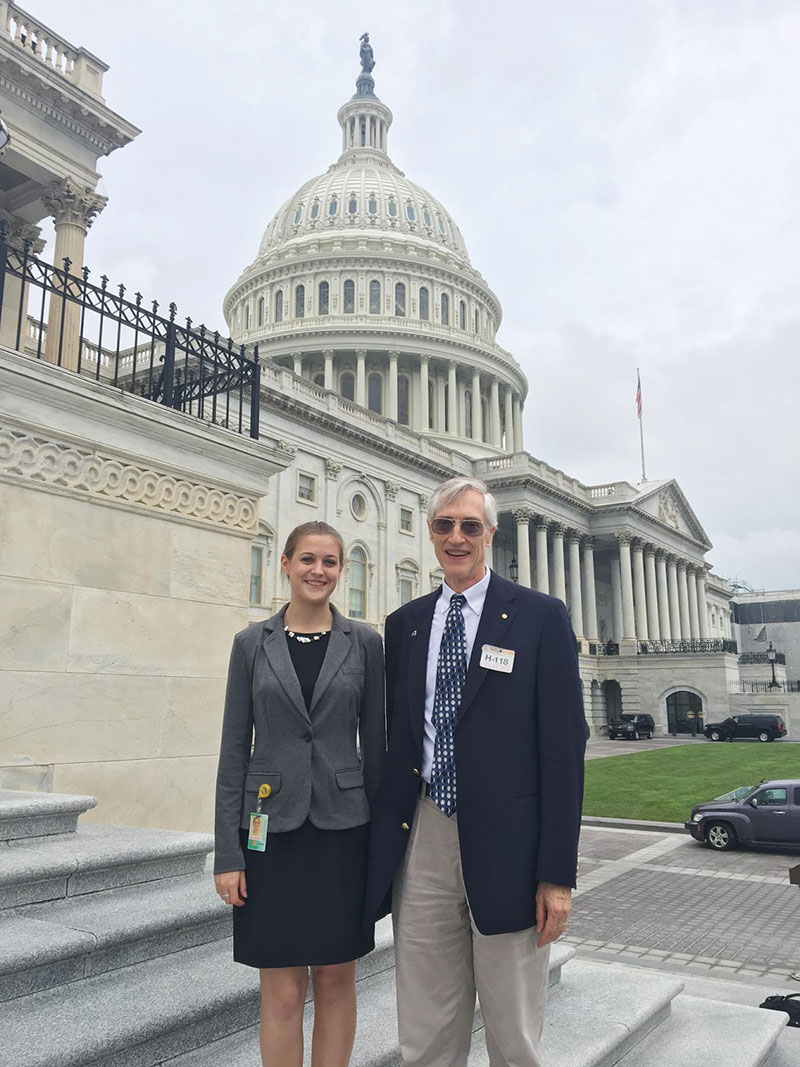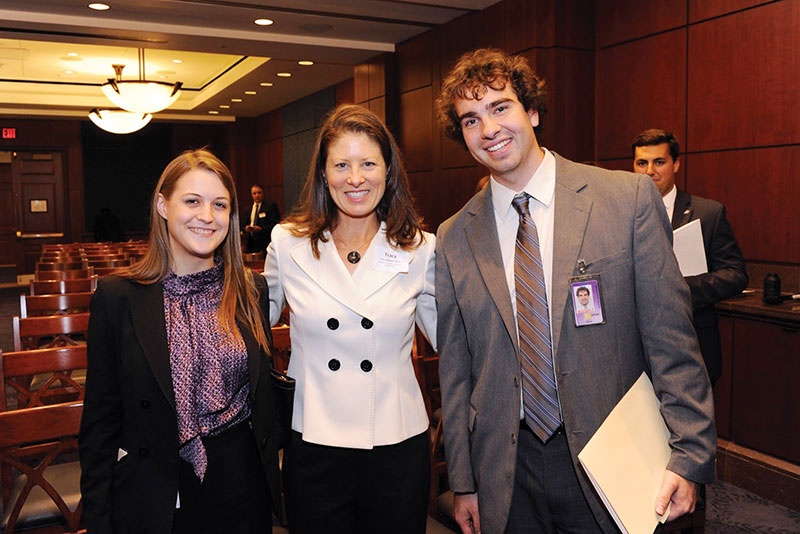A Peek Into the World of Federal Funding
Spring
2018
Feature
A Peek Into the World of Federal Funding
A quick overview of the questions being asked by Congress-- and how you can help answer them.
By:Eleanor Hook, SPS Member, Rhodes College
 All of us in the sciences have heard the complaint at one point or another: The government just doesn’t understand! When will they fund science properly? How can I afford to do my research? The truth is that the public policy that forms the basis for science funding is an incredibly complex issue, one we could all stand to learn more about. This summer, as an AIP Mather Policy Intern, I gained a much broader perspective on the world of science policy and the debates that rage on Capitol Hill.
All of us in the sciences have heard the complaint at one point or another: The government just doesn’t understand! When will they fund science properly? How can I afford to do my research? The truth is that the public policy that forms the basis for science funding is an incredibly complex issue, one we could all stand to learn more about. This summer, as an AIP Mather Policy Intern, I gained a much broader perspective on the world of science policy and the debates that rage on Capitol Hill.
In 2017, the U.S. federal government spent nearly $150 billion on research and development. Many of these projects have led to enormous advances in technology, medicine, and our fundamental understanding of the world. For example, research supported by the National Institutes of Health (NIH) and the NSF brought the now-ubiquitous MRI to hospitals across the United States. Federal funding is also partially responsible for Google (the NSF, NASA, and DARPA all helped support Larry Page and Sergey Brin in developing their new search algorithm), GPS (and the atomic clock that keeps it accurate), and the artificial intelligence and speech recognition that would eventually render Siri possible.
That’s not to say that government involvement in research isn’t hotly debated. Federal funding for research and development has declined as a percentage of GDP, from 1.2 percent in 1976 to 0.75 percent in 2016, and there is no indication that this trend will reverse. One of the most common disagreements is about the role government should play in research funding, compared to private industry.
It’s true that historically industry has been great at applying scientific advances quickly to make them commercially feasible, and some companies (like Tesla and Google) fund their own research operations. However, even those companies that do perform basic research operations rarely, if ever, fund research outside of what is directly applicable to their company and product line. The last large corporation to regularly fund a broad variety of research was Bell Labs — and that mostly ended after financial hardship in the 1980s.
Here’s another important question: Given that the government has a fund set aside for researchers, how much of this should be dedicated to basic research (cellular structure, theoretical physics, astronomy) and how much should go to applied research (disease prevention, quantum computing, solar energy)? There are compelling arguments on either side: Why should the government use taxpayer dollars for projects that will not directly benefit them? Why spend billions of dollars exploring the outer reaches of the solar system when there are more than 500,000 homeless people in the US?
On the other hand, many of the technological advances that we all benefit from stem from such “useless” projects. Without Einstein’s exploration of relativity, we wouldn’t be able to sync up our terrestrial clocks with satellites. Without studying quantum physics, we wouldn’t have smartphones. Without the highly theoretical work on coherent light in the early 20th century, we wouldn’t have CD players. The list goes on.
Finally, what percentage of our resources should be concentrated on incremental improvements on already-existing theories and technologies, and how much should go toward risky but potentially groundbreaking work? Many companies are willing to pour money into small projects or build upon advances made in government laboratories but are uncomfortable gambling large sums on research that may not pay off. How much should we allow industry to capitalize on taxpayer-funded research without taking on any of the risks? These are just a few of the countless questions asked by and of members of Congress every day.
What can we physics students do to enter this debate? The first is to follow it. Although many of us keep up with the daily headlines, how often do we see issues relating to research and development (barring the occasional outcry following a budget cut)? For more reliable updates, AIP’s FYI newsletter is an excellent resource. When you see an issue that’s important to you, call your representatives!
SPS also offers several summer internships in science policy each year. The AIP Mather Policy Internship places you on Capitol Hill, where you engage directly with the legislative process; your work will vary based on your placement, but I got to attend hearings and markups, perform research for legislation and speeches, and meet countless people who work in science policy. The AIP Science Policy News Internship also takes you to Capitol Hill, this time to report on important science topics, and gives you great experience writing and communicating professionally about science. SPS also offers an annual Congressional Visits Day (CVD) for chapter officers, where you’ll learn how to advocate on various science policy issues.
Even if you don’t want to devote your career to working on Capitol Hill, science outreach is still something you can use as part of your everyday work. Increasingly, studies show that while most Americans support research as a general concept, they have very little understanding of basic science or the scientific method. Many SPS chapters already perform some form of physics outreach; if yours doesn’t, see if you can make it happen! To those publishing research, it’s wonderful when you get accepted to that one journal that everyone in your field reads. But if the general community has no way to access or even understand your research, how much are you contributing to the world at large? Wherever you can, try to publish articles targeting the general public as well. By educating the public and getting voters excited about science and research, you’ll help keep the dialogue flowing. //



1. https://www.aaas.org/sites/default/files/Agencies.jpg
2. http://www2.itif.org/2014-federally-supported-innovations.pdf
